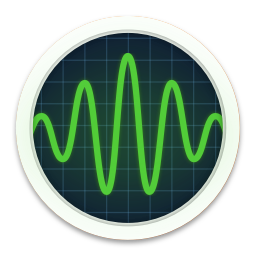Lagrange Interpolation with time interval of
day(s) First date (optional)
 Produce file of the selected parameters Produce file of the selected parameters
 Draw data Draw data
Spectral analysis (FFT, complex for 2D signal)
Amplitude
PSD
min. frequency or period
max. frequency or period
x linear scale x log scale
y linear scale y log scale
frequency spectrum (in cycle / unit of time)
period spectrum (in unit of time)
First derivative
Produce data
Plot
Weighted least square fit of periodic components (periods in unit of time)
Positive periods
Polynomial of degree
Negative periods
Weighted least square
(take negative periods only for 2 dimensional signal)
Draw residuals
Draw fit and input data
Print residuals
In-phase and out-of-phase terms (a, b) are estimated,
as well as amplitude A and phase φ :
1-D :$$\small X = A \cos[2\pi/T (t-t_0) + \phi] = a \cos[2\pi/T (t-t_0)] + b \cos[2\pi/T (t-t_0)]$$
2-D : $$\small X +i Y = A e^{i [2\pi/T (t-t_0) + \phi]$$
with the reference epoch $$\small t_0$$ = 1/1/2000 0hUT that is :
$$\small X = a \cos[2\pi/T (t-t_0)] - b \sin[2\pi /T (t-t_0)$$ $$\small Y = b cos[2\pi/T (t-t_0)] + a sin[2\pi/T (t-t_0) ]$$
with $$\small a = A \cos\phi$$ $$\small b = A\sin\phi$$
Vondrak low/high pass filter
Panteleev band pass filter (for 2D signal)
Produce data file
Draw filtered data and envelope / phase referred to 2πfct
cycle/time unit Band width f0=
cycle/time unit
This band pass filter was designed by Russian astronomer and gravimetrist V. L. Panteleev. Its frequency transfer function is given by
$$\small T(f) = \frac{f_0^4}{ ( f - f_c)^4 + f_0^4 }$$. At the edges of the window $$\small |f - f_c| = f_0$$ and $$\small T = 0.5$$.
Singular Spectral Analysis (SSA)
- Zoom between
and
The extracted components are decorellated over time windows of
(in the time unit) with the interpolation lag
(in the time unit). Firt step consists in the determination of the
eigenvalues and eigenvectors printed by decreasing weight. Then
5 singular components are reconstructed according to the following
combinations of eigenvectors, to be stated from the analysis of the
eigenvalues .
RC1
Reconstructed Component (RC) based upon eigenvectors N1 and N2
RC2
RC3
RC4
RC5
produce time series (date, signal, RC1,RC2,RC3,RC4,RC5,residuals)
draw
Graphic dimension x
output graphics
png
pdf
ps
Partial Interface with the C-Fortran Libraries SLAVA (C. Bizouard) & MIMOSA (S. Lambert).
Thank you for bringing to our knowledge any possible mistake, mail to : christian.bizouard at obspm.fr
| 

